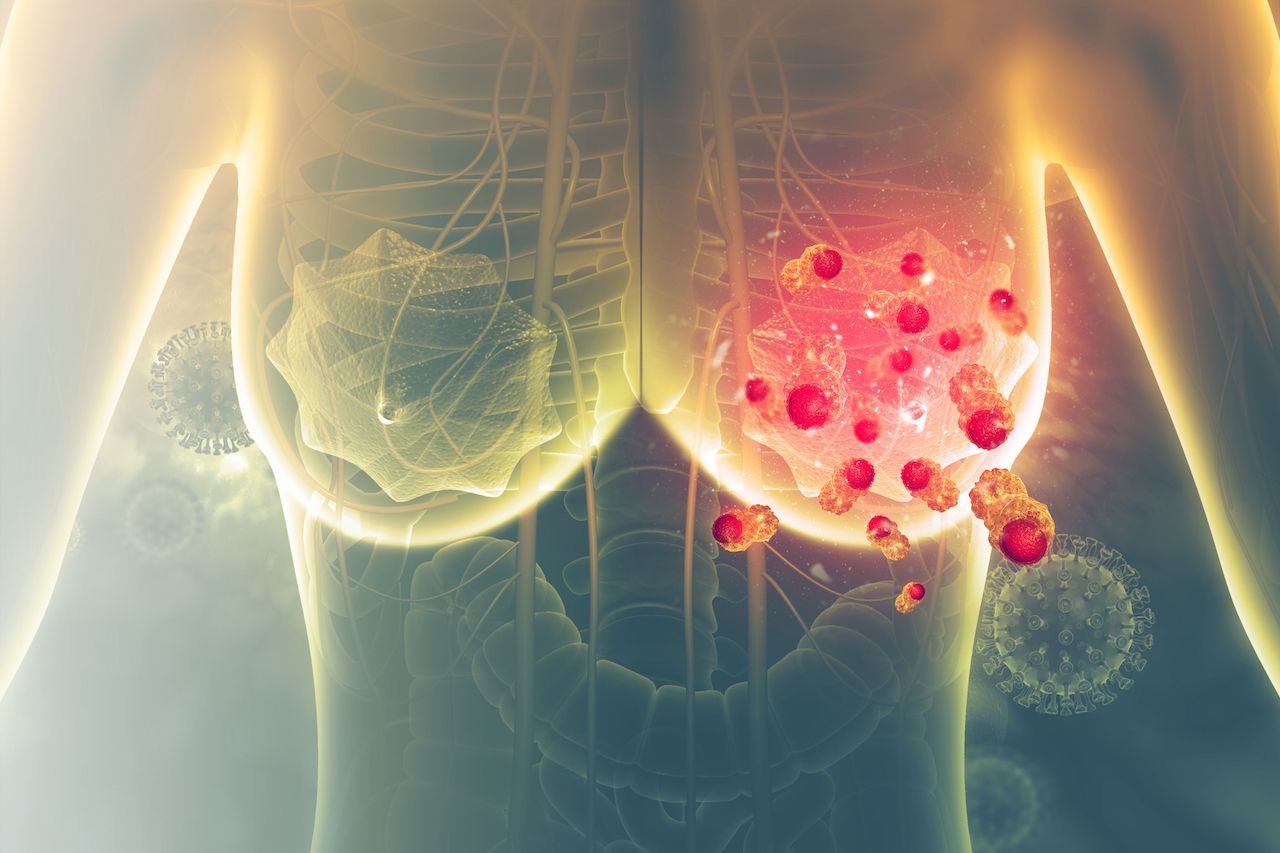Article
Are There Benefits to Awake Breast Cancer Surgery During COVID-19?
Author(s):
In Italy, a study looked at reallocating resources meant for patients with breast cancer to those stricken with coronavirus disease 2019, finding that the former could benefit from fast-track awake surgery to reduce risk of cross-infection.
Fast-track awake surgery to treat breast cancer significantly reduced operative room time (ORT) and hospital length of stay (LOS) among 76 patients treated at Tor Vergata University Hospital in Rome, Italy, thereby reducing their risk of cross-infection from coronavirus disease 2019 (COVID-19), report study results published in Breast Cancer.
This retrospective study looked at the effects of temporarily reallocating resources meant for patients with breast cancer to those stricken with COVID-19 because of hospital and bed shortages resulting from the pandemic, for patients who underwent breast cancer surgery between January 30 and March 30. The primary outcomes were effect on surgical time (ST), ORT, and LOS. Data on surgical procedures (breast conservative surgery [BCS] or mastectomy), complications (Clavien-Dindo grade >2), and anesthesia (awake, not awake) were collected.
Thirty-nine patients had surgery for their cancer before March 1 (pre–COVID-19–BC group), and 37 patients (COVID-19–BC group) after March 1. This cutoff was used, the authors noted, because this was “the moment when the first not-imported COVID-19 case was registered in Rome.”
According to the results, complications from surgery, surgical procedures, and clinical data did not experience any statistically significant changes from before to after the pandemic (P >. 05 for all). However, there were statistically significant decreases of 20.79 minutes in ORT (P = .040) and of 0.57 hospital bed days in LOS (P = .0015) for the COVID-19–BC cohort compared with the pre–COVID-19–BC cohort. The mean (SD) ORT and LOS for both cohorts were as follows:
- ORT:
- Pre–COVID-19–BC: 159.92 (43.02) minutes
- COVID-19–BC: 139.13 (43.83) minutes
- LOS:
- Pre–COVID-19–BC: 1.92 (1.31) days
- COVID-19–BC: 1.35 (0.68) days
Patients also underwent awake BCS most often (P = .006) in the COVID-19–BC group, at a rate that was more than twice that of the pre–COVID-19–BC group: 73% vs 36%.
“Our surgical strategy was planned to reduce as much as possible invasive surgery, choosing awake surgery and ERAS [enhanced recovery after surgery] protocols,” the authors noted. “This way, BCS could not be restricted to frail patients only as general practice, but extended to other patients.”
The mean (SD) patient age was 64.77 (8.4) years, and those in the pre–COVID-19–BC group were slightly older than the COVID-19–BC group: 64.26 (8.67) vs 61.2 (7.88) years.
There also were no statistically significant differences in clinical presentation, tumor size, or rates of early breast cancer (all P > .05). And when breaking down surgery by type, “axillary management did not show any statistically significant difference between the two periods in analysis,” the authors stated. This can be seen in the numbers they found for the following:
- Sentinel lymph node biopsy (SLNB) (P = 1.000):
- Pre–COVID-19–BC group: 87.17%
- COVID-19–BC group: 89.19%
- Axillary lymph node dissection (P = 1.000):
- Pre–COVID-19–BC group: 12.83%
- COVID-19–BC group: 10.81%
However, BCS plus SLNB did experience a statistically significant change after the March 1 cutoff: It increased from 35.89% to 67.56% of all breast surgical procedures.
This all resulted in 18.15 additional hours of surgery room availability, or 1.65 operating room days, and faster patient turnover to the tune of 21.09 hospital beds per day, the authors noted.
“Due to the short follow-up, it is not possible to underline how these measures affected COVID-19 spread in our institution, disease recurrence, the rate of long-term complication, or [breast reconstruction] aesthetic results,” the authors concluded. “Despite the lack of this data, early evidence on surgical management in this period could be useful to support different surgical strategy and to demonstrate further clinical evidence. Moreover, the COVID-19 crisis could be a chance for many breast centers to obtain local evidence to implement these learnings to apply in future normal circumstances.”
Reference
Vanni G, Pellicciaro M, Materazzo M, et al. Awake breast cancer surgery: strategy in the beginning of COVID-19 emergency. Breast Cancer. Published online July 30, 2020. doi:10.1007/s12282-020-01137-5





